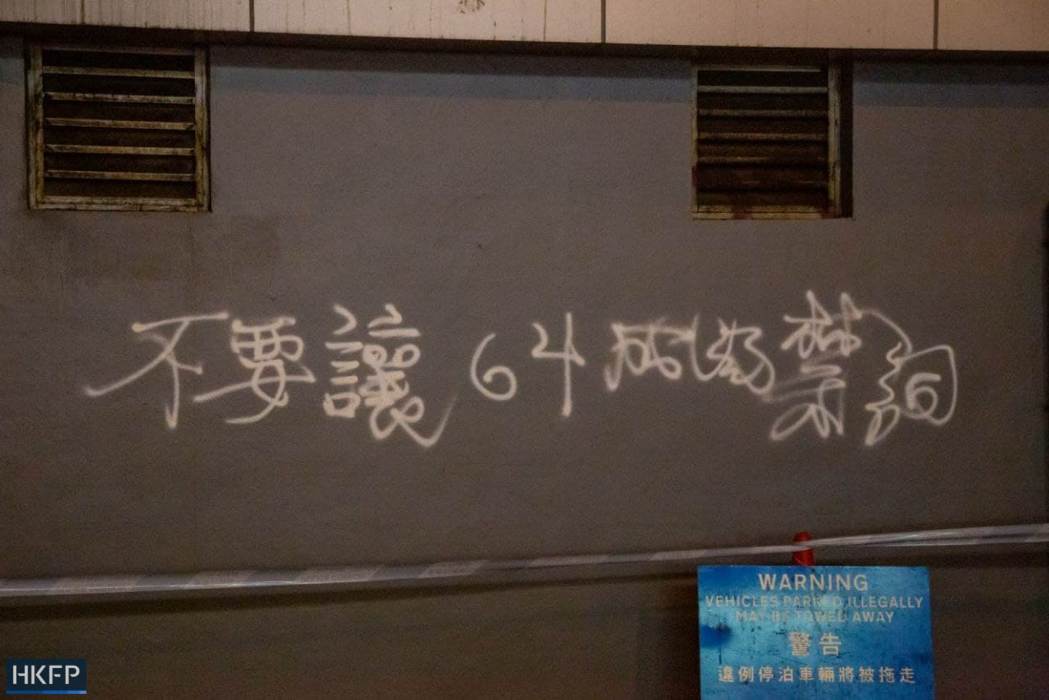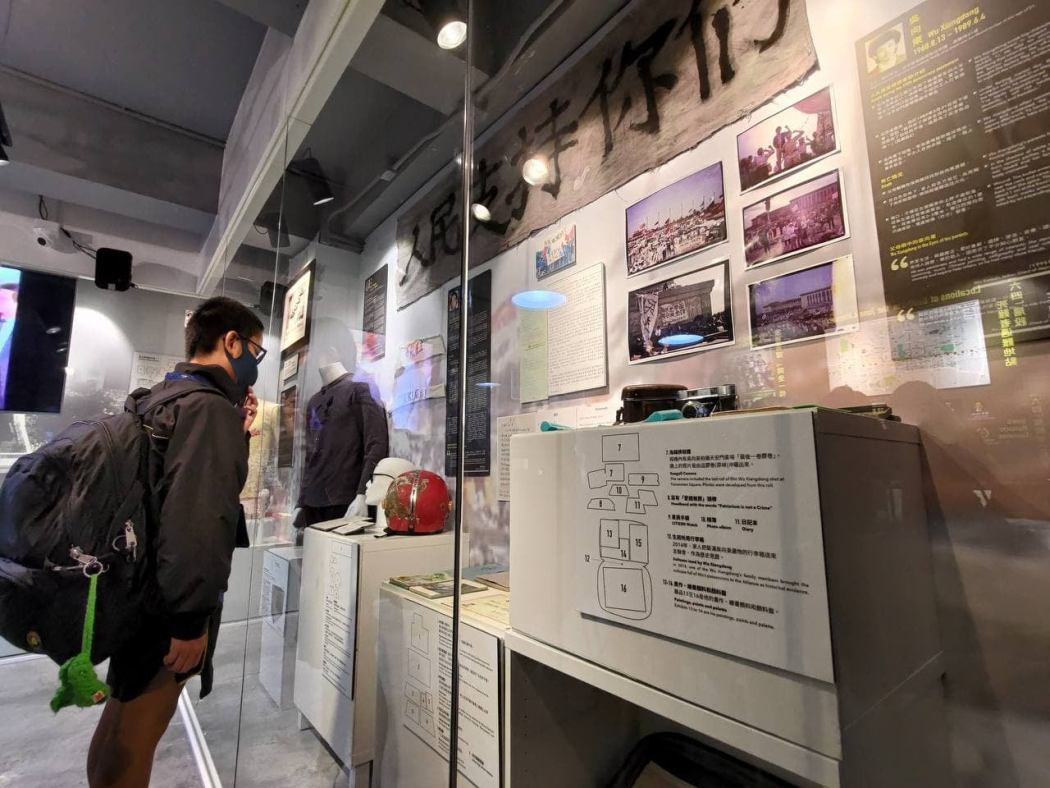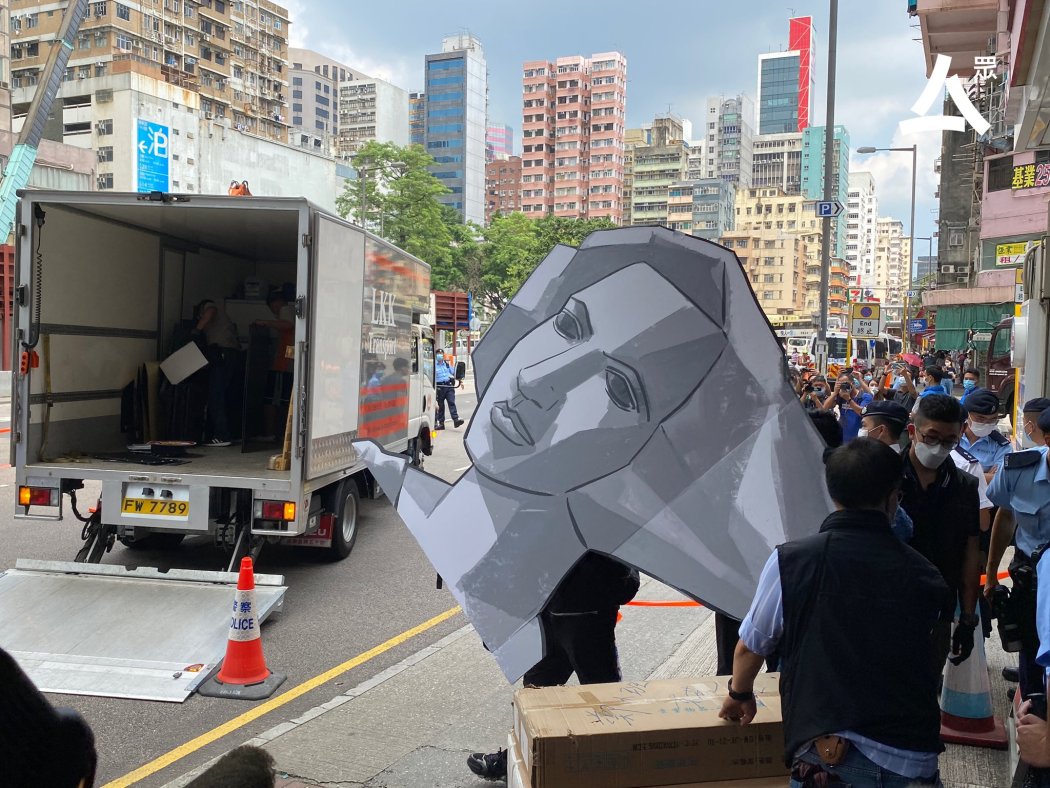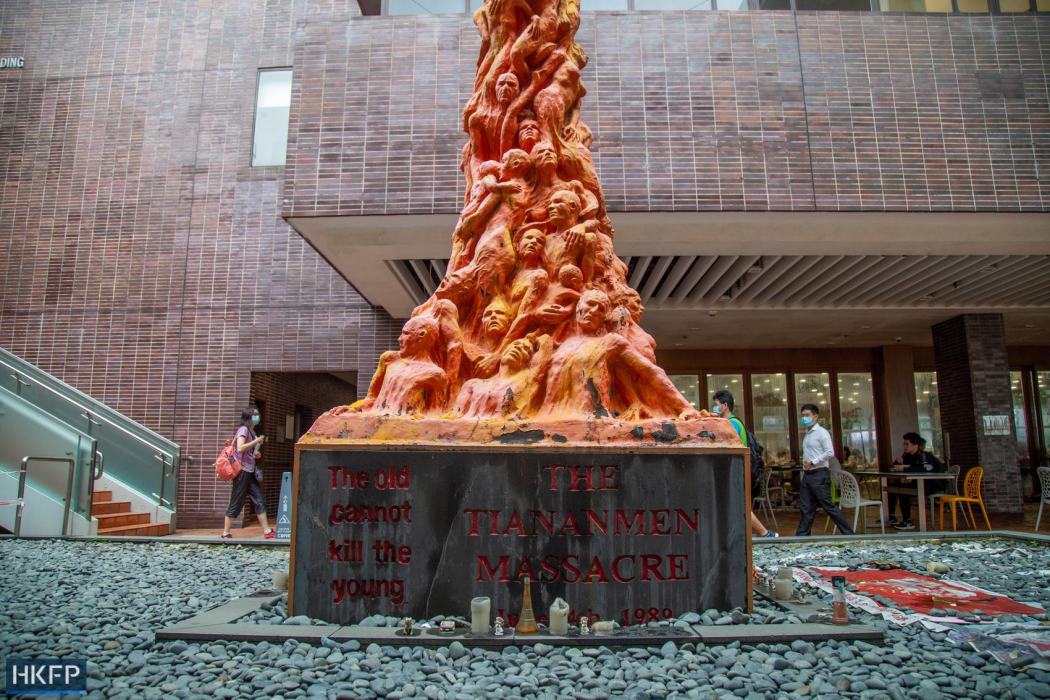More than three decades after Beijing deployed troops to crush protests in the summer of 1989, authorities are moving to erase Hongkongers’ memories of the Tiananmen Massacre.
HKFP rounds up the various moves, which culminated last month in the national security crackdown on the Hong Kong Alliance in Support of Patriotic Democratic Movements of China.

The Tiananmen Massacre on June 4, 1989 ended months of student-led demonstrations in China. It is estimated that hundreds, perhaps thousands, of people died when the People’s Liberation Army was sent in to crack down on protesters in Beijing.
Banning vigils
For decades on the evening of June 4, crowds had gathered in Hong Kong’s Victoria Park, the city’s largest outdoor venue, to light candles in memory of those who lost their lives and air demands for a democratic China.
The event organised by the Hong Kong Alliance, a group which had been formed by activists to support the budding movement in mainland China, drew tens of thousands of Hongkongers from all walks of life to peacefully commemorate an event which has been virtually scrubbed from the collective memory across the border.

The vigil was banned for the first time in 2020, three weeks before Beijing imposed its national security law on the city, with authorities citing public health concerns during the Covid-19 pandemic. Tens of thousands showed up anyway, pushing past police barricades, while hundreds more commemorated the event at special church services across the city.
Twenty-six high-profile activists, including Alliance leaders Lee Cheuk-yan and Albert Ho, were arrested and charged with inciting or taking part in an unauthorised assembly following the banned vigil. Two of the group fled into self-exile abroad.
Sixteen activists have been sentenced to up to 10 months in prison, while eight others are still waiting for their trials to begin next month.

The vigil was again banned this year. Authorities repeated pandemic concerns despite a low level of infections, and warned that anyone who defied the ban faced five years in prison. The Alliance said it would not show up
In the early hours of June 4 this year, the Alliance’s vice-chair Chow Hang-tung and a man were arrested for allegedly inciting others to take part in an unauthorised assembly.
Police were deployed in strength around Victoria Park that evening and the entrances were barricaded. Black-clad people carrying white flowers and electronic candles milled around on the streets surrounding the park, with many waving phone flashlights in commemoration.
But for the first time in over 30 years, Victoria Park stood empty at 8 pm on June 4. With the Alliance now disbanded, and amid an increasingly intolerant attitude to dissent, any future vigils are unlikely.
Censoring textbooks
From as early as 2004, the city’s largest teachers’ union raised concerns over how the massacre was depicted in the city’s history textbooks, with its chairman accusing authorities of “rewriting history.”

Accusations of censorship have only intensified in recent years. Last August, an international rights group slammed the removal of the massacre from the city’s textbooks.
Seizing museum exhibits
A museum run by the Alliance to preserve the memory of the bloody crackdown has been forced to shut. It was later raided and a webpage was taken offline.
The June 4 museum displayed archives and artefacts from the 1989 protests, despite years-long challenges in finding a permanent location and some resistance from the community.

The museum was forced to cease operations on June 2, shortly before the massacre’s anniversary and merely three days after it re-opened at a new location. The Alliance was later fined HK$8,000 for operating it without a proper licence.
Two months later, the police launched a probe into the Alliance, demanding information from the group and accusing it of being a foreign agent. The group refused to comply. By the end of September, five key members had been arrested and charged under the security law with refusing to provide information, while the group and three of its leaders were separately charged with “incitement to subversion,” a crime which carries up to ten years in prison.
During a fortnight-long operation against the Alliance, the police raided the group’s property, including the already-shuttered museum. Police took away key exhibits and boxes of evidence, broke a CCTV camera, and left the premises in a shambles.

By the end of the month, with its leadership arrested, assets frozen and property raided, the Alliance’s remaining members voted to disband.
Also within the month, an online version of the museum, which was run independently from the Alliance from abroad, has also become unavailable via several of the city’s major telecommunication providers.
Pillar of Shame
Following the swift police crackdown on the Alliance last month, other symbols of resistance are on the verge of disappearing.
Earlier this month, the University of Hong Kong (HKU) demanded that the now-disbanded Alliance remove an eight-metre-tall statue created in memory of the massacre that has stood on its campus since 1997.

The university gave the group a week-long deadline to remove the two-tonne statue, declaring that it would otherwise be deemed abandoned.
The “Pillar of Shame,” which depicts twisted bodies twisting towards the sky, was created by Danish artist Jens Galschiøt and present to the Alliance in 1997. The artist is now asserting his ownership rights to the monument and has retained a lawyer.
The university’s initial deadline passed. The statue remains on its campus, with the university saying it will deal with the issue in a “legal and reasonable manner.”
Elsewhere on HKU’s campus, the words “Souls of martyrs shall forever linger despite the brutal massacre; Spark of democracy shall forever glow for the demise of evils” are written on an overpass.
Students and activists have led annual ceremonies to wash the Pillar of Shame and repaint the slogan. It remains unclear whether they will be allowed to continue.
Support HKFP | Policies & Ethics | Error/typo? | Contact Us | Newsletter | Transparency & Annual Report | Apps
Help safeguard press freedom & keep HKFP free for all readers by supporting our team

























